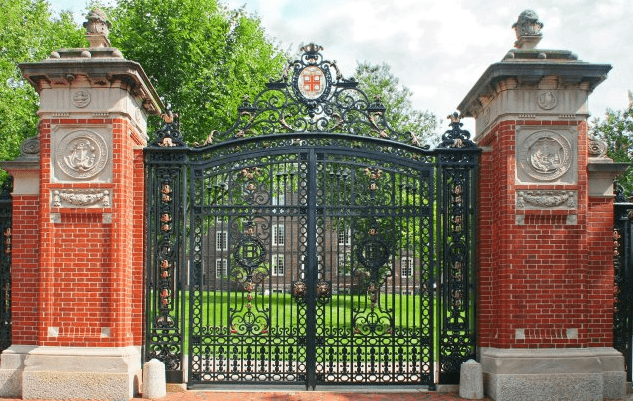This post is a student contribution from Claudia Moser’s class ARCH 1764: 25 Things! 250 Years of Brown’s Material Past
I decided that I would attend the cake and firework display on Friday night in order to participate in what I saw as the most anticipated event of the 250th anniversary celebration. I had assumed that I would stand somewhere on the Main Green where I could see the large University Hall cake and hear any speakers. However, when I got there, all I could see was a crowd of people. I am not one for crowds—they make me a bit anxious and I can’t stand being jostled around—so I decided to go and stand by the Bear Statue and to wait for the fireworks. While I stood there, I realized how much could be gleaned from just observing the reactions and interactions of the crowd. So, that is the perspective from which this blog post is written.
Standing just in front of the half-wall that surrounds the Bear Statue and a few yards from Faunce arch, I was able to hear and see many people’s first reactions to the Main Green as they entered. The most common exclamation I heard from folks who had just arrived was, “Where is the cake?” and “How will we get cake with so many people?” Behind me, a few children sat on their parents’ shoulders and on the Bear’s pedestal and chanted “we want fireworks, we want fireworks!” Everyone had come for their own reason. They had come to be entertained, or to be fed, or for both reasons. No one in my vicinity mentioned anything about being there for the community or to be amongst the members of Brown’s past, present and future. However, from where I stood, I saw current students, faculty members, alumni, and children all in one place for a brief moment to share in one experience from many perspectives for varied reasons.
None of us who were standing on the sidelines of the Green could hear anything that was said up on the Faunce steps, and my only view of the cake was through pictures texted to me by friends. This didn’t bother me, though. I, like the children behind me, was there for the fireworks. As the beautiful light display began, I was surprised how spectacular it truly was. I had honestly been expecting Brown to have been restricted due to budgeting, but the show proved me wrong. As I was thinking about this, a few of the people around me began to question the parts of Brown’s past and present that were being ignored and pushed under the rug by the dazzling, sparkling fire in the sky.
They wondered about where the money had come from and who had been hired for the set up and break down of the event. They wondered how Brown could convince donors to give so much to a fantastic, but in some ways superficial and gaudy, display of wealth but we had such difficulty finding sources for financial aid for students. Finally, I heard a few participants wonder if there would be an acknowledgement of the involvement of slave labor in the building of University Hall or of the exclusion of people of color in Brown’s early years.
We all came to the event for different reasons. We all had different perspectives of the presentations due, in part, to where we stood. But, in the end, we were all there to represent and to take part in the celebration of Brown’s past present and future. It is important to celebrate the aspects of Brown that make it unique and that have lead to its position as a forward-thinking university. It is also important to acknowledge that the institution that we celebrate is imperfect and has had its hand in systems and policies with questionable ethics. The voices in the crowd spoke for the imagined future of our university, for the experiences of the people who were able to be here on this day, and for the stories of people long forgotten. Whether we knew it or not, while we all gazed up at the artwork in the sky, we were bearing witness to the past, present, and future of Brown.




